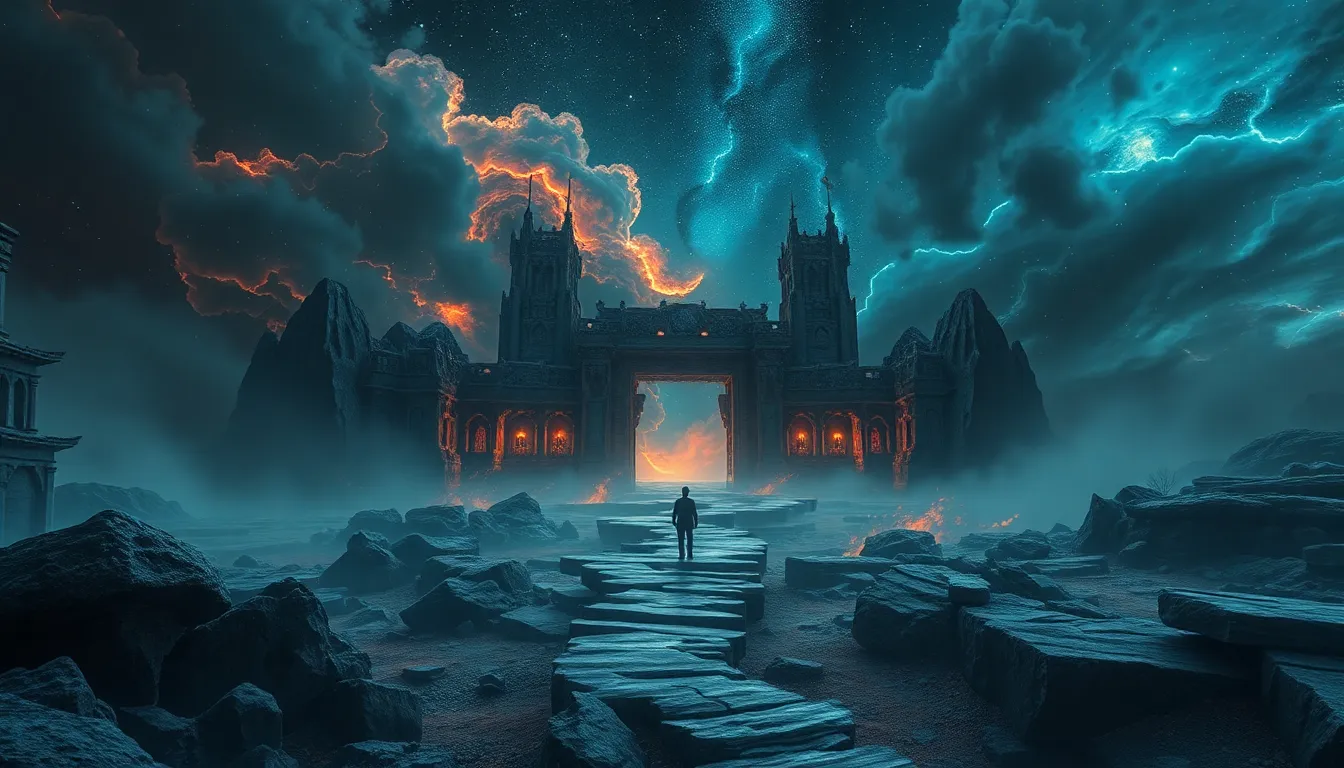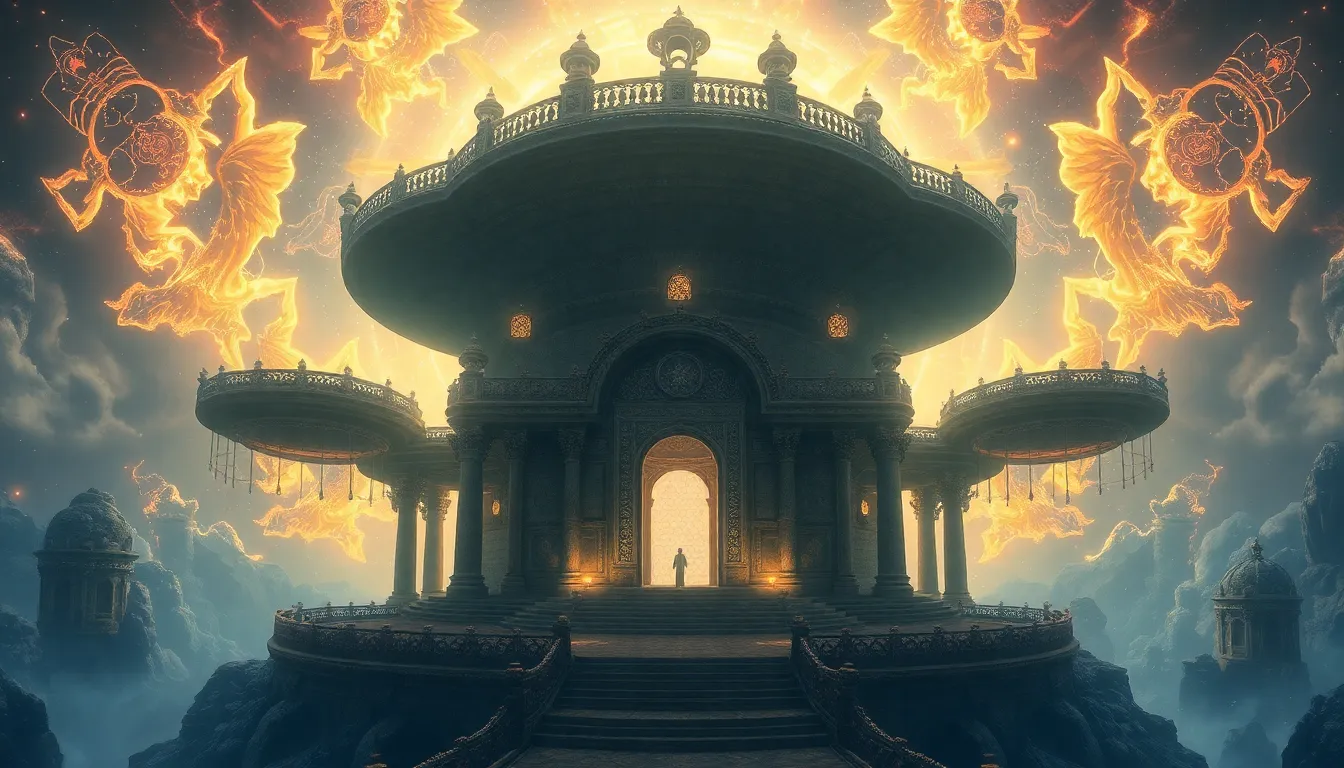The Kingdom of the Lost Realities: Myths of Parallel Worlds
I. Introduction to Parallel Worlds
Parallel worlds, often referred to as alternate realities or multiverses, represent a fascinating concept within mythology and science. These worlds exist alongside our own, sometimes mirroring it, while at other times diverging dramatically. The significance of these concepts in mythology lies in their ability to explore the human condition, the nature of existence, and the possibilities of what lies beyond our immediate perception.
The Kingdom of Lost Realities is a metaphorical space where these alternate worlds reside, filled with their own rules, beings, and stories. This kingdom serves as an intriguing focal point for those who delve into the depths of mythology and metaphysics. Understanding these myths helps illuminate the complexities of parallel worlds and their implications on our lives.
Exploring the myths surrounding parallel worlds is essential not only for understanding ancient beliefs but also for gaining insights into modern perceptions of reality and existence.
II. Historical Context of Parallel World Myths
Throughout history, various civilizations have entertained the idea of alternate realities, each adding their unique interpretations to this captivating concept.
A. Ancient civilizations and their beliefs in alternate realities
- Mesopotamian and Egyptian perspectives: In ancient Mesopotamia, the afterlife was seen as a shadowy reflection of the earthly realm, where spirits navigated a complex underworld. Similarly, the Egyptians believed in a journey to the afterlife filled with tests, leading to a parallel existence in the Field of Reeds.
- Greek and Roman interpretations: The Greeks explored the notion of alternate realities through myths of the underworld, particularly in works by Homer. The Romans adopted and adapted these ideas, weaving them into their own narratives of gods and heroes.
B. The evolution of parallel world myths through the ages
- Medieval folklore and the concept of other realms: During the Middle Ages, folklore flourished with tales of faerie realms and enchanted places. These stories often depicted other worlds accessible through hidden portals, capturing the imagination of the populace.
- The Renaissance and the rebirth of mystical thought: The Renaissance sparked renewed interest in magic and the occult, leading to a resurgence of myths surrounding parallel worlds, including the exploration of alchemical texts that hinted at hidden dimensions.
III. Cultural Perspectives on Parallel Worlds
The understanding of parallel worlds varies significantly across cultures, shaped by philosophical beliefs and storytelling traditions.
A. Eastern philosophies: Buddhism and Hinduism
- Concepts of multiple realities in Eastern belief systems: Buddhism teaches about the illusion of reality (Maya) and the existence of multiple realms of existence, while Hinduism presents a rich tapestry of realities governed by karma and dharma.
- Reincarnation and the cyclical nature of existence: Both traditions emphasize a cyclical view of life, where souls traverse multiple lives, hinting at a continuum of realities intertwined with personal growth and enlightenment.
B. Western literature and folklore
- Notable works of fiction that explore parallel worlds: Literature has long been a vessel for exploring alternate realities, with seminal works such as Lewis Carroll’s “Alice’s Adventures in Wonderland” and C.S. Lewis’s “The Chronicles of Narnia” delving into these themes.
- The role of fairy tales and folklore in shaping beliefs: Fairy tales often introduce readers to magical realms, serving as a bridge to understanding the complexities of human experiences through allegorical narratives.
IV. Scientific Theories and Parallel Worlds
In recent years, scientific inquiry into parallel worlds has gained traction, particularly within the realms of physics.
A. Quantum mechanics and the multiverse theory
Quantum mechanics suggests that particles can exist in multiple states simultaneously, leading to the proposition of a multiverse where every possible outcome occurs in parallel realities.
B. Theoretical physics and its implications for parallel realities
Theoretical physicists explore concepts such as string theory and bubble universes, which propose that our universe may be one of many, each with its own unique laws of physics.
C. The intersection of science and mythology
This convergence of scientific theory and mythological exploration enriches our understanding of existence, prompting profound questions about the nature of reality and the universe.
V. The Role of Dreams and Altered States of Consciousness
Dreams and altered states of consciousness have long been associated with journeys into parallel worlds.
A. Dream exploration as a gateway to parallel worlds
Many cultures believe that dreams can transport individuals to other realities, offering insights and lessons from these alternate realms.
B. Shamanic practices and their connections to alternate realities
Shamanism often involves entering trance states to access other dimensions, where shamans communicate with spirits and gain knowledge from these parallel worlds.
C. The influence of psychedelics on perceptions of reality
Substances like psilocybin and ayahuasca have been shown to alter perceptions and create experiences that some interpret as encounters with alternate realities.
VI. The Kingdom of the Lost Realities in Modern Culture
In contemporary society, the concept of parallel worlds has permeated various forms of media.
A. Representation in literature and film
- Examples from popular media: Works such as “The Matrix” and “Interstellar” explore the complexities of reality and the existence of multiple dimensions, reflecting modern anxieties and curiosities.
- The impact of digital media on the exploration of alternate worlds: Virtual reality technology allows users to immerse themselves in constructed worlds, blurring the lines between fiction and reality.
B. Video games and interactive media as gateways to lost realities
Video games like “The Legend of Zelda” and “Portal” present players with alternate worlds to explore, allowing for a personal engagement with the concept of parallel realities.
VII. Psychological Interpretations of Parallel Worlds
The exploration of parallel worlds can also be understood through psychological lenses.
A. The role of the subconscious in shaping our understanding of realities
Freudian and Jungian theories suggest that our subconscious mind may project alternate realities based on our desires, fears, and unresolved conflicts.
B. Jungian archetypes and their connection to parallel worlds
Jung’s concept of archetypes can be seen as representations of parallel realities within our psyche, influencing our perceptions and experiences.
C. The therapeutic potential of exploring alternate realities
Engaging with alternate realities through art, literature, or therapy can provide individuals with new perspectives, helping them navigate their personal struggles.
VIII. The Ethical Implications of Parallel Worlds
The existence of parallel worlds raises various ethical considerations.
A. Moral dilemmas presented by the existence of alternate realities
What does it mean for our choices if every possible decision creates a new reality? This question challenges our understanding of morality and accountability.
B. The impact on identity and self-perception
How do alternate realities influence our sense of self? The notion that multiple versions of ourselves exist can complicate our identity and self-worth.
C. Philosophical considerations of choice and consequence
Ultimately, the contemplation of parallel worlds invites profound philosophical discussions about free will, destiny, and the nature of existence.



